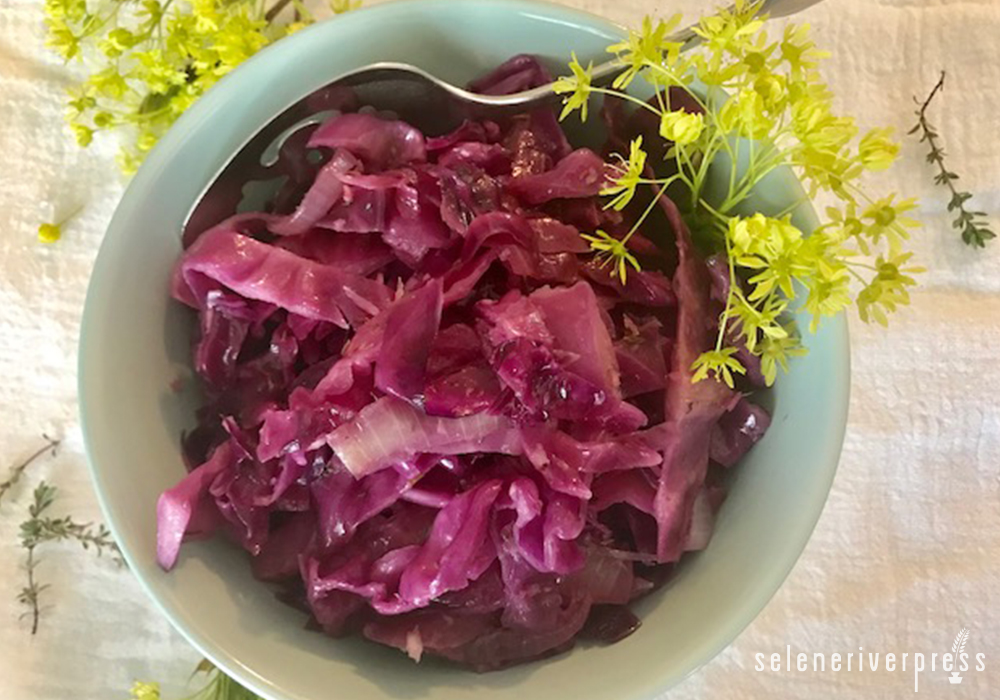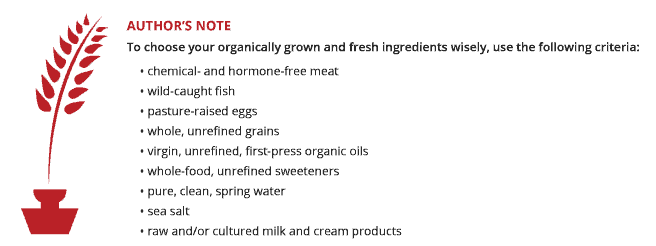I’ve always loved horseradish, and the pungent kick it gives, as an accompaniment to something like a juicy prime rib or side of salmon. But it wasn’t until the last few years that I began thinking of it as anything more than just a condiment, with a limited scope of use. The more I’ve experimented with it, however, the more I’ve come to appreciate its versatility, using it in places I never would have thought to.
Horseradish is divine, for instance, as an accent in salad dressings. It’s outstanding as a topping for baked potatoes, along with a dollop of sour cream and a sprinkle of chives. And it complements sweet, juicy fruits such as nectarines surprisingly well. It also lends a lovely accent to vegetable dishes, taking on multiple roles as both side dish and condiment.
The horseradish plant has a long history in traditional medicines and has been used to treat countless ailments over the centuries. It’s a member of the cruciferous vegetable family, a group of veggies well known for their wide range of health benefits. Many of these benefits are believed to stem from a group of sulfur-containing compounds known as the glucosinolates and, especially, their breakdown products the isothiocyanates, or “mustard oils.” These compounds are what give crucifers their pungent, spicy flavor. (It’s isothiocyanate in horseradish that makes your eyes water.)
Glucosinolates help protect cruciferous plants from toxic and severe environments, and researchers believe they do the same within our bodies, helping us fight off and prevent disease and illness. You’ve probably heard that eating cruciferous vegetables such as broccoli and kale is associated with a decreased risk of getting cancer. Well, guess what? The amount of glucosinolates in horseradish is about ten times that of broccoli! So a little goes a long way.
Other research supports the breadth of traditional uses of horseradish. Studies have linked its consumption with reducing symptoms of respiratory sickness, such as bronchitis and sinusitis, as well as those of urinary tract infections. It also stimulates bile, which aids gallbladder function, and it eases digestion in general. Horseradish has shown anti-inflammatory, antimicrobial, and antibacterial properties, and it’s even been shown to work as a pain reliever.
As an accent to vegetable side dishes, horseradish goes well, I’ve found, with other potent vegetables from the cruciferous family, since neither overpowers the other. Red cabbage is a particularly tasty match and adds its own set of healing and nutritive properties to the mix.
In Tangy Red Cabbage with Fresh Horseradish and Thyme, the tartness of cider vinegar combines with the bright punch of red cabbage and kick of horseradish to make a truly harmonious side dish, perfect opposite rich, fatty meats such as pork, duck, and salmon. But really it could pair with anything. And the vinegar does more than just provide taste. Its acid reacts with the pigments in the cabbage, turning them from a dull purple color to a bright, intense, fuchsia pink.
I make my own prepared horseradish whenever I can. I’ve found most store-bought versions to be too tame in terms of heat and flavor (and thus likely diminished in healthfulness too), so I am always super happy when I find fresh horseradish roots for sale, or, even better, I’ve dug them straight from the garden. The difference in flavor and potency between store-bought prepared horseradish and that made with freshly grated horseradish root is like night and day.
Prepared horseradish is incredibly simple to make. All it takes is a sharp peeler or paring knife, a food processor, salt, and vinegar. Beware the fumes when grinding the root, though—the mustard oils are no joke and will burn your eyes and nostrils like there’s no tomorrow. (Arm yourself with a pair of ski goggles if you are wary.) That said, making your own prepared horseradish is well worth the effort, and the stuff lasts forever in the fridge. So if you chance upon some fresh horseradish root, go for it!
Tangy Red Cabbage with Fresh Horseradish and Thyme
Note: For best results prepare the horseradish at least one day before use. This recipe makes about 1 cup of prepared horseradish, so there will be some left over. Stored in the fridge, it should keep for six to twelve months.
Serves 4–6
Prep time: 15 minutes, plus an additional 15 minutes to prepare horseradish
Cook time: 10–15 minutes
Ingredients
2 horseradish roots, peeled and chopped (enough to make 1½–2 cups)
2 tablespoons white vinegar
1 teaspoon salt
2 tablespoons butter, bacon grease, duck fat, lard, or other fat of choice
1 medium onion, peeled and sliced
1 medium red cabbage, quartered, cored, and cut into ¼-inch thick slices
1 apple, sliced (optional)
1 tablespoon dried thyme
Salt and pepper, to taste
2 tablespoons cider vinegar
Honey, to taste (optional)
Instructions
- Using a sharp peeler or knife, peel the horseradish, removing and discarding any woody parts. Rinse the peeled roots well under cool water; then chop them into large chunks. Place the chunks in a food processor along with the white vinegar and salt. Pulse until finely chopped. Remove lid (carefully!) and let fumes dissipate for about a minute. Taste, and add a little extra vinegar (up to 1 tablespoon) or salt if desired. (The spiciness will get stronger after it sits for a couple days.) Transfer to a clean jar and cover with a tight lid. Refrigerate, preferably at least a day, until ready for use.
- Melt butter or other fat in a large, shallow pan or wok until hot. Add onions and sauté until crisp-tender, about 5 minutes. Add cabbage, apple (if using), thyme, salt, and pepper. Cook veggies until cabbage is wilted and almost tender, about 5 minutes. Add cider vinegar and simmer until cabbage is tender and turns bright pink. Add 1–4 tablespoons of the prepared horseradish, depending on your taste, as well as additional cider vinegar, salt, and/or honey to taste. Serve warm.
Image from Briana Goodall.



